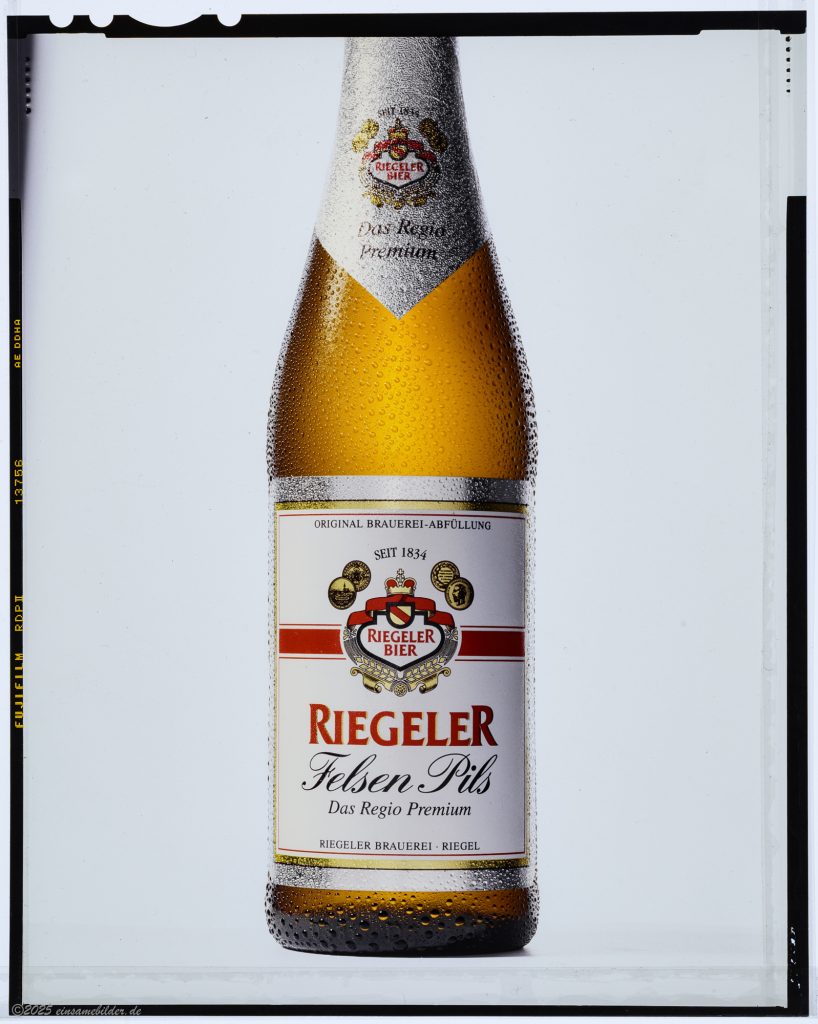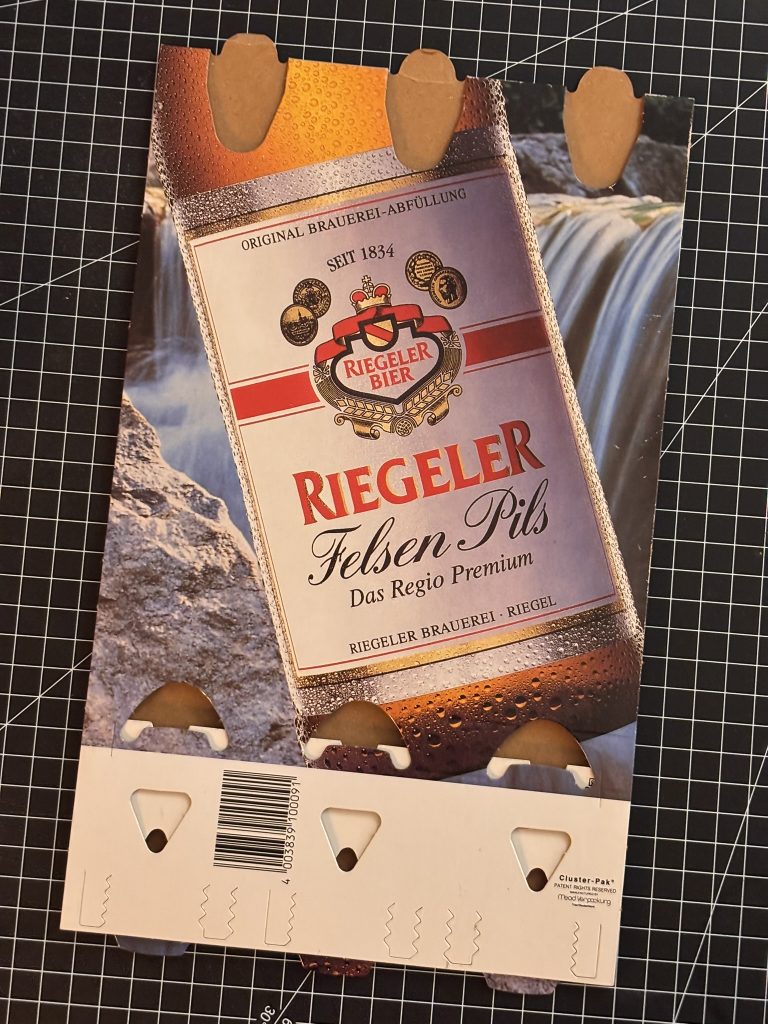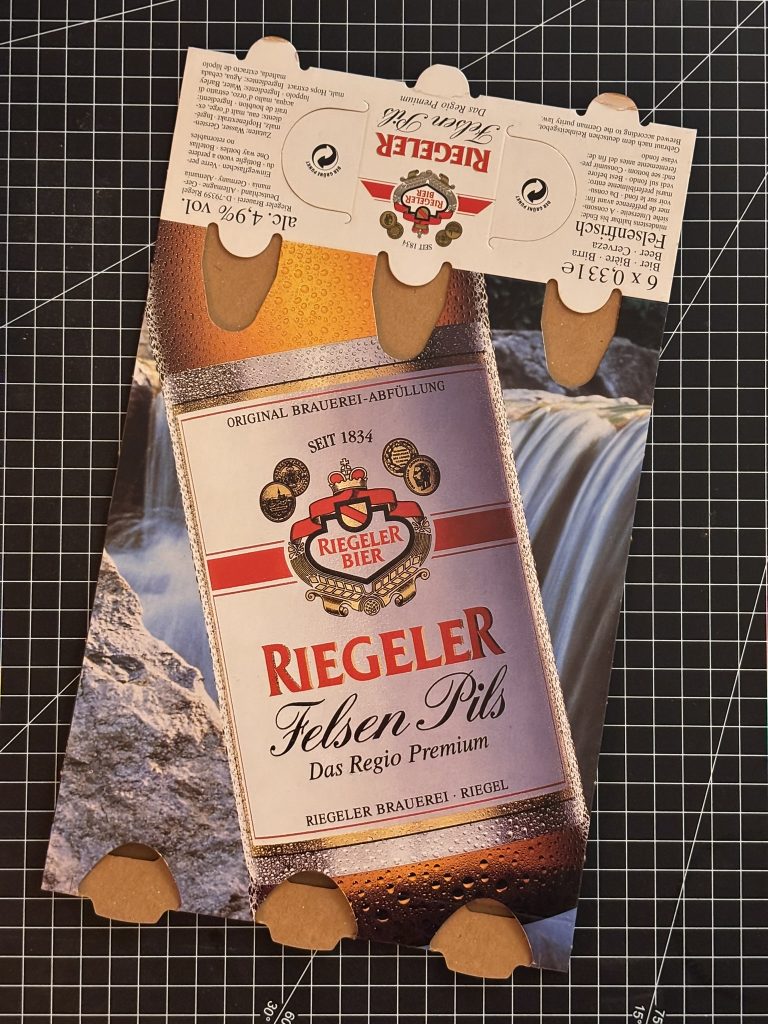A perfectly shot beer bottle has something almost magical about it: it looks ice-cold, freshly opened, with tiny water droplets clinging to the neck like it just came out of the fridge. But creating that look in a studio? Much harder than it seems. What appears to be a fleeting moment is actually the result of careful planning, patience, and a toolbox full of tricks.

A shot from the 90’s. (Original reproduction.) Taken with the Sinar P on Fuji RDP II 4×5 inch slide film. The photo was used for the packaging of a six-pack of beer. (See the result bottom line ..)
The Problem with Reality: Water Evaporates — Fast
Real condensation on glass evaporates within minutes under studio conditions. Worse, the droplets often run or streak, ruining the clean, crisp look. With hot studio lights or flashes, it dries up even faster. That seductive sense of coolness, freshness, and moisture — the essence of a tempting beer shot — disappears almost instantly.
Trick #1: Fake Droplets That Look Real
Instead of relying on actual condensation, pros turn to a mixture of water and glycerin. Glycerin is thicker than water, evaporates much more slowly, and helps droplets stick to the bottle longer — perfectly round and camera-ready. A fine spray bottle can evenly mist the surface, and for precision, individual droplets are sometimes applied with a small brush.
Pro Tip Recipe:
50% Glycerin + 50% Water in a fine mist sprayer = long-lasting, realistic droplets.
Trick #2: Managing Reflections on Glass
Glass reflects everything — lights, cameras, even the photographer. Shooting a glossy bottle without distracting reflections is a delicate balancing act. That’s why many commercial photographers use frosted or matte-coated bottles, or treat the surface with a diffusion spray to reduce shine.
For clear glass beer bottles, lighting is key. The light should skim across the bottle or shine through it — not directly onto it. Light tents, softboxes, and strip lights are essential for creating highlights and depth without harsh reflections.
Trick #3: Ice That Doesn’t Melt
That perfect bed of crushed ice around the bottle? It’s often not ice at all. It’s acrylic or resin — artificial ice that doesn’t melt, doesn’t puddle, and looks just as real in the shot. It gives the scene that cold, refreshing feel without the mess or time pressure.
Surfaces under the bottle — like brushed metal or frosted glass — are often sprayed with the same glycerin-water mix to add subtle “sweat” and boost the overall chill factor.
Trick #4: Simulate Cold — Don’t Use It
The bottle in the shot only needs to look cold — it doesn’t need to be cold. A genuinely cold bottle fogs up too quickly, drips too much, and gives the photographer less control. A room-temperature bottle, prepped with artificial droplets and staged under ideal lighting, delivers a cleaner, more consistent result.
Bottom Line: Nothing Is Accidental — Everything Is Crafted
That perfect beer bottle on a billboard is a staged masterpiece. Every droplet is placed. Every glimmer is planned. The challenge lies in creating something that looks effortless — using a highly controlled, deliberate setup.
Capturing the feeling of cold and fresh requires more than a camera. It takes a sharp eye, some chemistry, and a few well-kept secrets from the world of commercial photography.
The Result


Leave a Reply